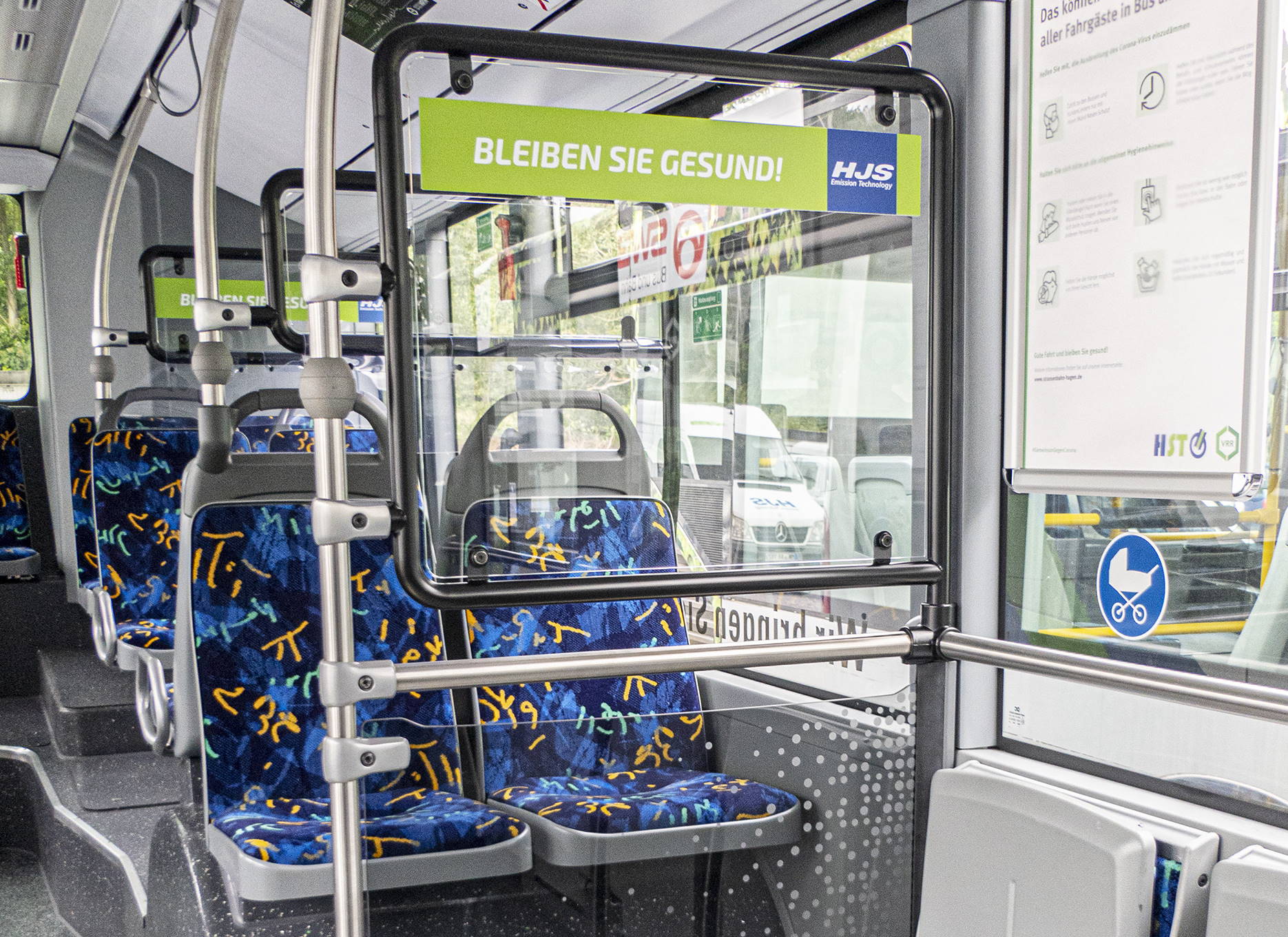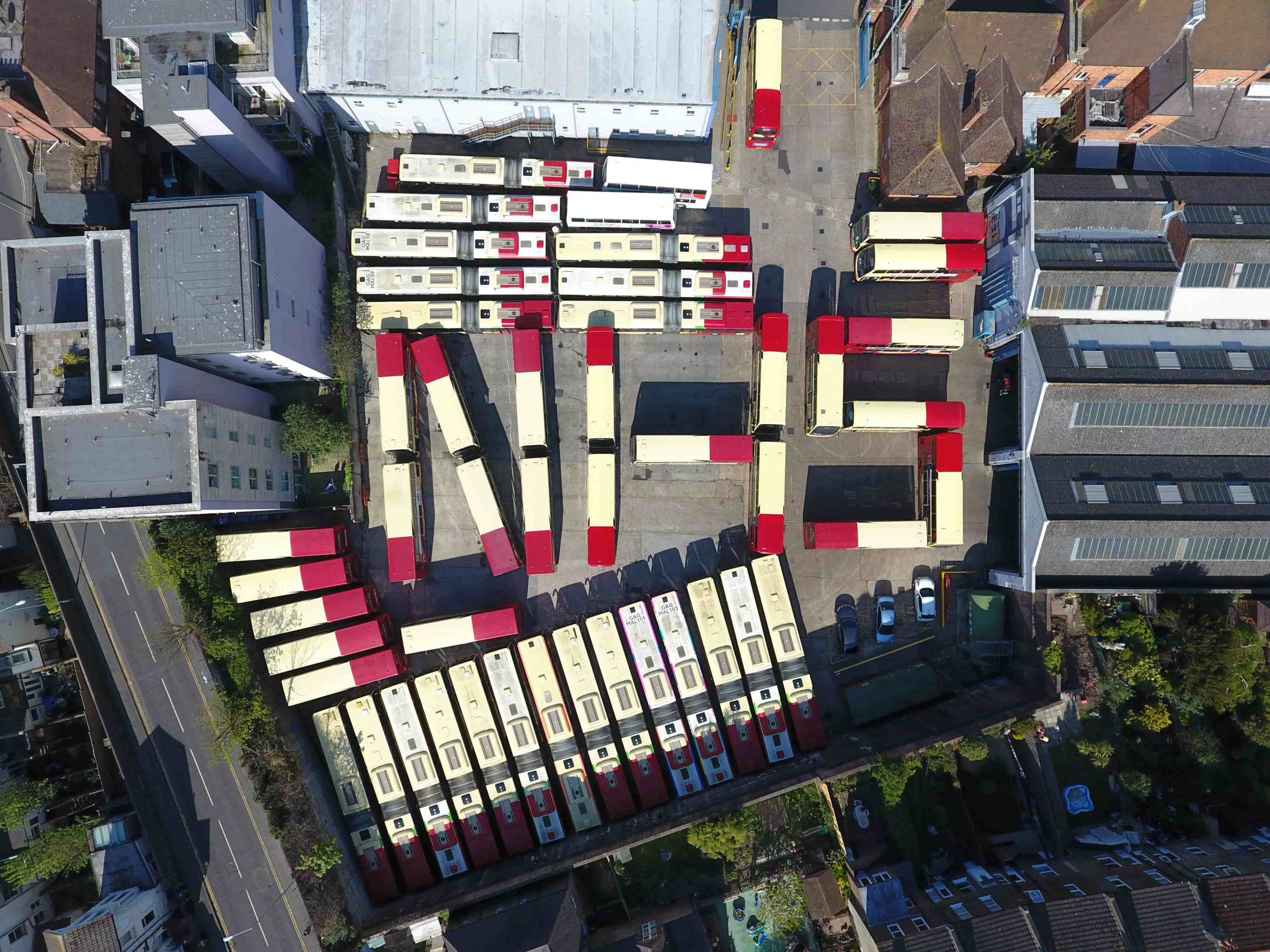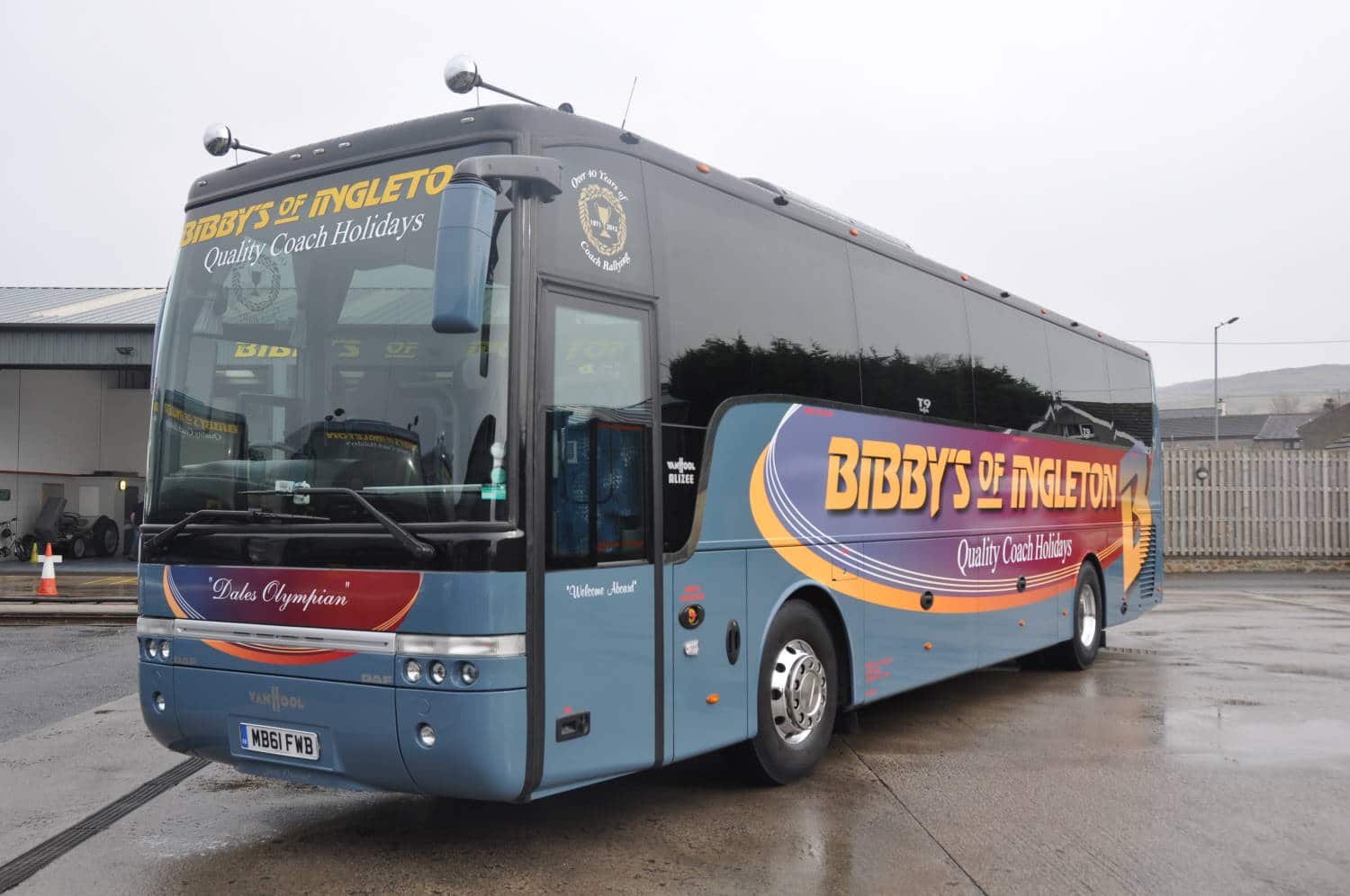A new protective screen design from HJS Emission Technology could see coaches and buses operating closer to full capacity – but your co-operation is needed to make it happen
Coronavirus COVID-19 and air quality are issues that go hand in hand. That is what HJS Emissions Technology firmly believes, and why it is introducing protection screens that could fight the transmission of coronavirus COVID-19 and help passenger carrying vehicles operate at full capacity again.
HJS claims the screen solution will allow coach and bus operators to return user numbers back to as close to full capacity as possible, while keeping passengers and drivers protected.

From concept to reality
The screens have been designed by two German engineers who use knowledge gained in the bus market to design a solution catered specifically for the industry. They approached HJS with the concept, and a new partnership saw development begin shortly after the introduction of lockdown.
The first buses fitted with the protective screens rolled out of the German facility last week. HJS has confirmed that a German operator has already placed an order for 500 units. “We are beyond the concept stage in Germany, and already see this product as the potential method to allow operators to use all of their seats,” says Mark Cooper, Managing Director of HJS Emission Technology.
Co-operation needed

The screens are not expected to be a standalone measure, of course. Working in conjunction with other measures such as deep cleaning and users wearing face masks, Mark believes the protective screens will go further to boost public confidence and make travel safer.

HJS claims the screens can be developed for virtually any application, from coach to bus, minibus and rail. After a digital scanning process of the vehicle and existing seat frames, production moves onto a bespoke design and installation phase.
Wherever a supporting frame in the vehicle chassis permits, the versatile HJS protection screens can be adapted. “We take a structural scan of the seats and the surrounding area and that gives us the space envelope to design a bespoke solution for any vehicle,” Mark says.
On a bus with poles and handrails fitted, the new screens would be used in conjunction with those existing poles and seat structures, attached using secure points on the existing chassis mounts. Where upper decks may not carry enough existing structure, the screens can be attached to the vehicle frame.
For coach applications, poles would be installed from the chassis to the ceiling structure, and then attached laterally to the vehicle walls and windows. Minor ingress into passenger space is expected, though Mark says the screens complement the existing structure of each vehicle and have been designed with passenger comfort in mind.
How much does it cost and how long does it take?
Being a bespoke offering means the design process is expected to take around two weeks from inception. An additional two weeks should be given for kits to be delivered. Installation can then begin, which Mark says could take as little as half a day on smaller vehicles or two days on the largest. “The application process is key in terms of seeking vehicle structure,” Mark says. “The work done at the prototype and design level allows the fastest and most accurate installation. All adaptation work is done prior to delivery of the final kit.”
As the design process is bespoke, kits will eventually be priced on a per-vehicle basis. HJS says a universal option, based on four basic kits, can be adapted to suit a specific application, or a bespoke option designed to suit a particulate vehicle can be developed. All kits include a driver protection screen.
Passenger screens are thus far an unusual proposition, and one that Mark believes sets HJS apart from other offerings. It follows frustration that existing measures are not going far enough to protect passengers. “Operators are still wondering how they will overcome this issue. Many operators have reported that passengers are ignoring demarcated seats.”
A complement to the air quality debate
Mark points to the importance of protecting passengers from coronavirus COVID-19 in the context of the ongoing air quality debate, in which HJS has been active with its retrofit technology.
“There are strong links between air quality and coronavirus COVID-19 deaths,” he says. “This product shows our association between an ethos of providing air quality improvements to better public health, and another step in passenger health and safety.
“HJS is a protector of public health, and this complements our offerings to help operators do their bit.”































